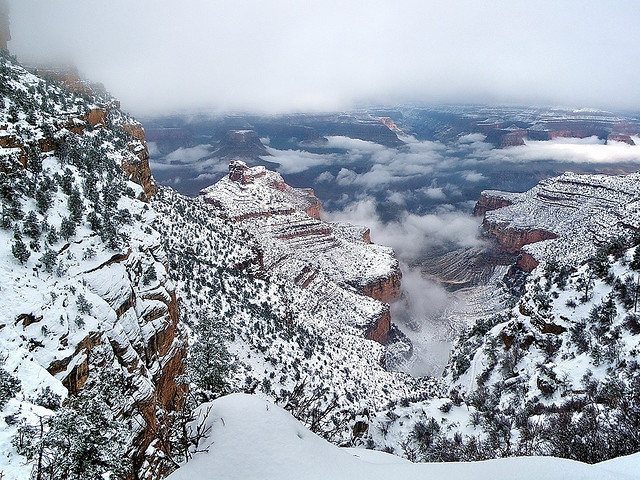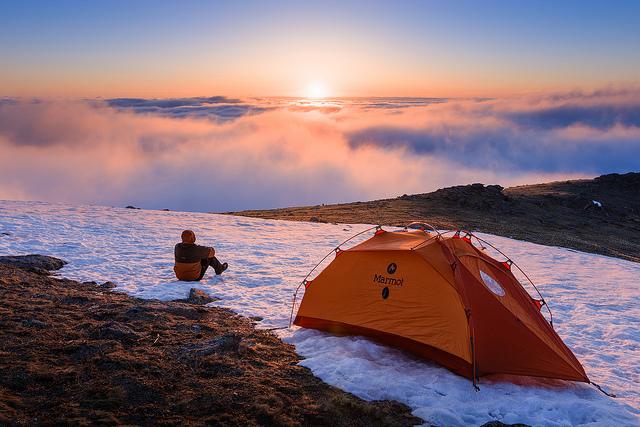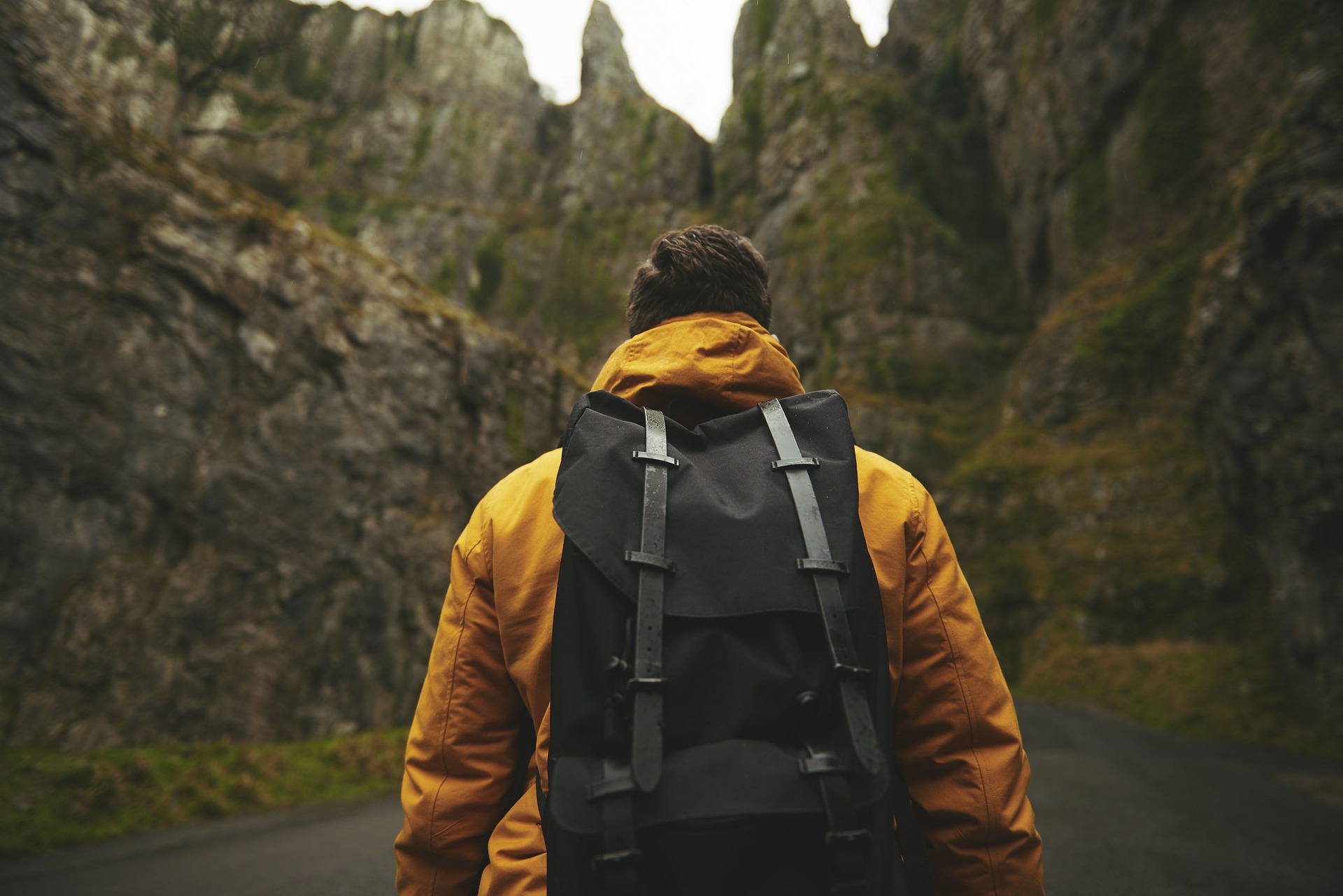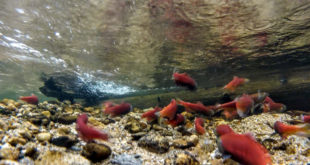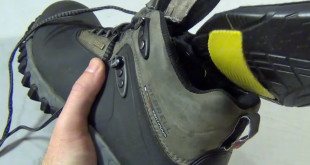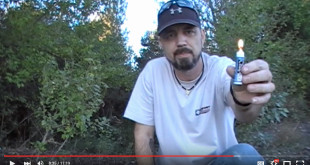With snowstorms and frigid temperatures taking hold across the country the past few weeks, many people have decided that it’s time to hang-up their backpacking gear for the next few months. While backpacking in the winter offers new challenges, the opportunity to have a trail all to oneself to enjoy the views and quiet can be too much for others to let pass. Winter backpacking does require a different skill set than 3 season backpacking, so before heading out it’s a good idea to brush up on some pointers to make your winter hikes a little safer.
- Layering: Having a good layering system is key to maintaining a comfortable temperature from morning to nightfall, no matter what the level of activity. Here are a few tips to help regulate body temperature throughout the day:
- In the morning when activity level and temperature is low use a lot of layers. Once you get moving after breakfast remove just enough layers until you feel a little cool, but not chilled. Taking off too much, or not enough, can result in overheating, sweating, or losing heat, all of which lead to potential problems.
- If you do stop after you’ve been moving for a while, be sure to add another layer to keep from getting chilled.
- At the end of the day as your activity level decreases and temps drop, add as many layers as you think you’ll need to stay warm. It’s easier to remove layers to cool off than to warm up after you’ve been chilled.
- Ice crossing: Whether it’s a river or lake, being able to cross an icy body of water is a common occurrence in the winter. It’s difficult to tell how thick and stable ice might be, so test it out by using a ski pole or walking stick. Also, review techniques on how to save yourself or rescue a partner if someone falls through and other tips such as unclipping your hip belt and chest strap on your pack so you can quickly dump it if you should fall through the ice.
Bright Angel Trail: Alan English (https://www.flickr.com/photos/alanenglish/4235597518)
- Avalanche Safety: If traveling in avalanche prone areas, you’ll have to recognize potential avalanches spots, cross avalanche zones safely, and know personal and group rescue techniques. You’ll also need to think about what additional gear has to be carried to be properly prepared. It also doesn’t hurt to review some avalanche (http://www.justgetout.net/subaru/postAvalanche-ABCs-for-Snowshoers) basics (http://www.backpackinglight.com/cgi-bin/backpackinglight/avalanche-assessment-sawchuk.html#.VHESF2TF_6h) before you head out.
- First-Aid Techniques: Many of the same first-aid treatments carry over to winter from 3-season backpacking. But winter backpacking also requires that you know how to treat frostbite, snow blindness, and hypothermia, among others.
- Build an Emergency Shelter: If your tent sustains some serious damage or a day hike is suddenly interrupted by snowstorm, knowing how to make an igloo (http://samh.net/backpacking/blog/2012/01/how-to-build-an-igloo.html), snow cave (http://sectionhiker.com/how-to-build-snow-shelters/) or a snow pit (http://samh.net/backpacking/blog/2012/01/how-to-build-an-igloo.html) can be a lifesaving skill.
- Proper Nutrition: Hiking in cold and freezing temps requires to you consume more calories to keep warm and provide needed energy throughout the day. Eating complex carbohydrates and fats will give you the fuel to keep the body going all day. Here are a few quick eating tips:
- Breakfast: Something quick, hearty, and easy so you don’t get chilly waiting for food to cook
- Lunch: If you want to keep moving during the day, packing ready to eat options are good options, But if you prefer to take a break, taking time to cook a hearty meal can be nice break and give you added fuel for the day. Just remember to bundle up when you stop to cook.
- Dinner: After a day of hiking, foods high in fats and complex carbohydrates are a good option to replenish lost calories and keep you warm at night.
- Snacks: GORP, raisins, M&Ms are all still good options. Eat some protein before heading to bed. Protein is slow to digest and will create added heat while you sleep.
- Route Planning and Travel Time: With less daylight, snow covered trails, and sudden snowstorms, knowing the route is extra important in the winter. By spending a few minutes reviewing the map before you start the day can make hustling to the next campsite or finding a quick spot to set-up for the night a little less stressful.
- Shelter Set-up: Frozen ground and snow can add valuable minutes to setting up your tent. Knowing how to properly stake out the tent, using walking sticks or downed wood if needed, and properly packing the snow can prove invaluable during snowstorms or extremely cold temps. Remember that cold fingers and gloves also complicate the set-up process.
Evans Summit Fog: Casey McCallister (https://www.flickr.com/photos/cmccalli/9037463595)
- Gathering & Boiling Water: Dehydration is a problem in winter as the dry air can suck moisture from your body, so it’s important to know how to stay hydrated and warm. A simple tactic is to carry a thermos of warm water for coffee, tea, or cocoa that can keep your insides warm throughout the day. For drinking water, boiling can be the easiest method since filters can freeze and chemical treatments are not as effective in freezing temperatures. Remember that when melting snow to put some water at the bottom of the pot, otherwise you risk burning the pot and wasting fuel to melt snow.
- Leave No Trace Principles: With snow and freezing temperatures, leaving no trace takes a little extra effort and planning. It’s good to review the principles for winter backpacking (https://lnt.org/teach/winter-recreation).
With clear skies, fewer people, and snow covered views; those that do brave the cold swear that winter offers some of the best backpacking opportunities of the year. At the same time, there are new and potentially serious challenges. As long as you’re adequately prepared with the right knowledge and skills, you’ll be able to enjoy the next few months with a little less stress, more confidence, and a little more warmth.
[divide]
Byline: This guest post was provided by Ryan Rankin. Ryan currently lives in San Francisco but grew up fishing and running in the woods of Wisconsin. When he’s not busy with work, he tries to head into the Sierras for some rest and relaxation. You can follow more of his writings at The Amateur Outdoorsman (http://www.theamateuroutdoorsman.com/).
 The Outdoor Adventure Giving you tips, tricks & recommendations to help make adventuring in the Outdoors fun, safe & exciting for you and your kids.
The Outdoor Adventure Giving you tips, tricks & recommendations to help make adventuring in the Outdoors fun, safe & exciting for you and your kids.


